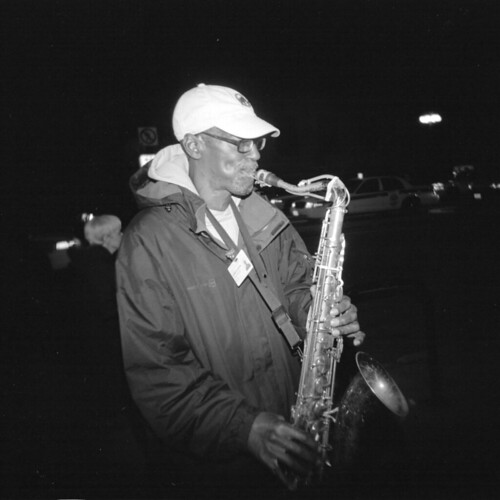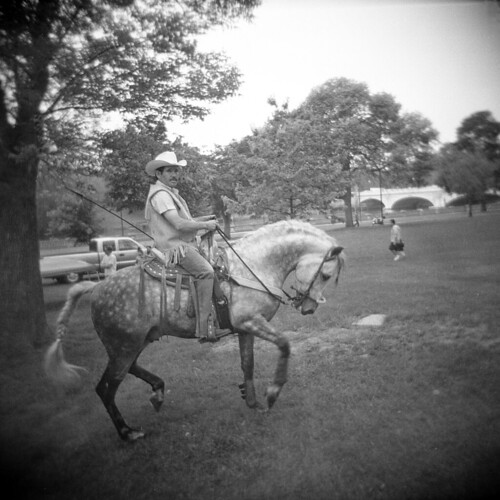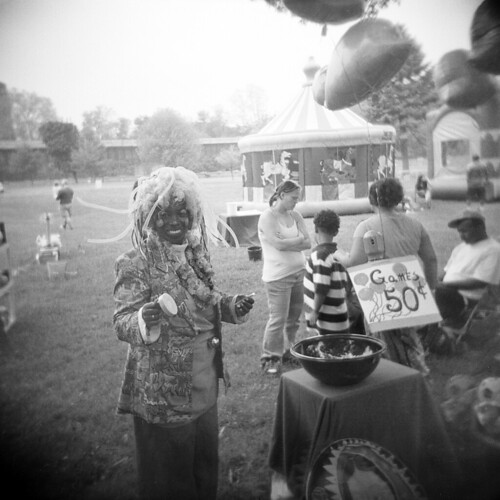Wednesday, August 01, 2012
Hiroshi Watanabe
"Pipe-cleaner Flower Arrangement in Gallon Jug, Tule Lake, California 1" by Hiroshi Watanabe
Gentle readers, after an absence of lo these many months, I feel it necessary to delve once again into the subject of fine art photography. As usual, I have no right to pontificate on this subject, save for the fact that I have spent some minutes Googling the California-based photographer Hiroshi Watanabe. Do not be deceived. The urge to inform you about this talented photographer does not derive solely from the fact that I know how to spell Hiroshi, a skill I acquired when I became fascinated by the work of another genius of the photographic medium, Hiroshi Sugimoto.
I believe I first heard about Mr. Watanabe from a podcast by Martin Bailey. After Mr. Watanabe's name rattled around the dank recesses of what remains of my mind for several months, the time for further research had arrived.
When the name of Hiroshi Watanabe bubbled up from my subconscious, I went to his very impressive web site. Among the many galleries of his brilliant work on display there, I was particularly taken with the portfolio titled "Artifacts - Things from Japanese Internment Camps." The photos are of items Mr. Watanabe found at the Japanese American Museum in San Jose, California, and at a dump site from a California internment camp where Japanese Americans were detained during WW II.
I believe the photo above, of a flower arrangement inside a gallon jug, made from pipe cleaners by a resident of the camp, and subsequently left in the dump when the detainees were released, is one of the most heartbreakingly beautiful images I have ever seen.
Monday, May 28, 2012
The Return of Elektro
A replica of the mighty Westinghouse robot, Elektro, is going on a national tour soon according to this NPR story about Elektro.
Sunday, May 27, 2012
Street Photography
A couple of years ago, I attended a photography workshop in Chicago. The instructor was really big on photographing strangers. He felt it was important for photographers, who tend to be introverts, to overcome their shyness and photograph strangers. Inspired, I set off for the local farmers' market the following weekend to photograph people. The first vendor I asked was very nice and cooperated willingly. The second one was a very interesting looking character who may have had a police record. In any case, he flatly refused to let me take his photo. This took considerable wind out of my sails, and I packed up my camera and went home.
As I look through my Flickr photostream of some 2600 pictures, I can find six photos where I had some level of consent from a stranger before clicking the shutter. It may have just been holding up the camera and getting a nod, or actually asking to take a picture. Two of these photos were of the same guy feeding pigeons in Daley Plaza in Chicago. I have taken a few other street photos without the subjects' knowledge. I hope in the future to include more people in my photography, as I think it adds an element of interest beyond that provided by inanimate objects or flora and fauna.






As I look through my Flickr photostream of some 2600 pictures, I can find six photos where I had some level of consent from a stranger before clicking the shutter. It may have just been holding up the camera and getting a nod, or actually asking to take a picture. Two of these photos were of the same guy feeding pigeons in Daley Plaza in Chicago. I have taken a few other street photos without the subjects' knowledge. I hope in the future to include more people in my photography, as I think it adds an element of interest beyond that provided by inanimate objects or flora and fauna.






Sunday, April 01, 2012
Bern Porter

As recently as a couple weeks ago, I had never heard of Bern Porter. Now, I find myself, as I often have in the past, pontificating upon a subject based upon scanty and hastily-acquired knowledge.
I have a weekend subscription to the New York Times. I do my best to read as much as I can on Sunday, but I save the book review section to read during the week. After accumulating a few weeks' worth, I was preparing to dispose of the pile, when a brief review from January 25, 2012 caught my eye:

FOUND POEMSIf you are so lacking in self-respect that you have read this blog in the past, you may be aware of my interest in the art of Marcel Duchamp, including his famous urinal-as-art called "Fountain." Well, in my opinion, anyone influenced by Duchamp deserves further investigation.
By Bern Porter. Nightboat Books. Paper, $24.95.
Inspired in part by Marcel Duchamp's ready-mades, Porter (1911-2004) created poetry from the mass-media images and "verbiage that one might call a kind of alternative literature - package labels, banal instructions, lists," David Byrne writes in his foreword. Above, "Glump."
As usual, I began, and pretty much ended, my research by typing "Bern Porter" into Google, which led me to bernporter.com. I would encourage the interested reader to peruse the wealth of information at that site, as I do not have the time or energy to plagiarize it here.
Just a few highlights I would like to include here:
Porter was a scientist who worked on the development of the cathode ray tube but never owned a television, or for that matter, a telephone.One particularly interesting section of the Bern Porter web site includes pdf files of several of his books. One of these is called Aphasia (1961). Porter called it a "psycho-visual satire on printed communication." It consists of fragments cut from newspapers and magazines, reflecting the culture of the late fifties and early sixties. Most of the pages are ads, with some Sunday comics, stock tables, and other ephemera throw in. I must say, crazy as the concept is, I found it appealing. In the spirit of Porter, I've electronically cut some fragments from the book, which I present here. These things stirred memories of my own childhood.
He worked on the Saturn V rocket.
He worked on the Manhattan Project, but later renounced the atomic bomb.
His FBI files, which can be accessed via bernporter.com, reveal that he was considered a "screwball" by many people who knew him. If you doubt this characterization, I would encourage you to check out videos of his poetry readings on the web site. He really was weird. He also had a habit of abruptly walking away from conversations he found boring. Ah, wouldn't we all like to be able to do that?





Thursday, January 05, 2012
Trumbo on Jeopardy
 Dalton and Cleo Trumbo at the House Un-American Activities Committee hearings in 1947
Dalton and Cleo Trumbo at the House Un-American Activities Committee hearings in 1947Last night, I had the satisfaction of coming up with the correct question in Final Jeopardy. Even better, all three contestants on the show were stumped.
The category was "1930s Novels."
The clue was:
AN AUDIO VERSION OF THIS ANTI-WAR NOVEL BY A ONCE BLACKLISTED AUTHOR HAS INTRODUCTIONS FROM CINDY SHEEHAN & RON KOVIC
The contestants all incorrectly guessed All Quiet on the Western Front. The correct response was "What is Johnny Got His Gun?"
I had read Johnny Got His Gun way back in 1971, when I was in college and should have been doing course work. During those tumultuous times, reading an antiwar novel seemed more important to me.
I didn't know much about the book's author, Dalton Trumbo, until 2008, when I heard a reading of his hilarious letter to the manager of the Franklin Hotel in Rochester, Minnesota. Subsequently, I did some reading about Trumbo and how he was affected by McCarthyism. I wrote about this in the previous post "Argus," which is a much better piece than the current entry. I highly recommend clicking on the link to read it.
Subscribe to:
Posts (Atom)


